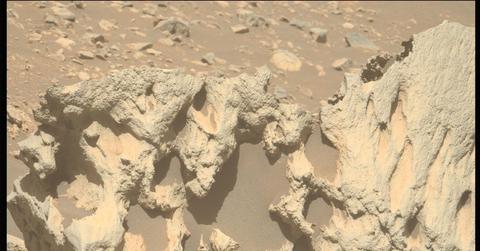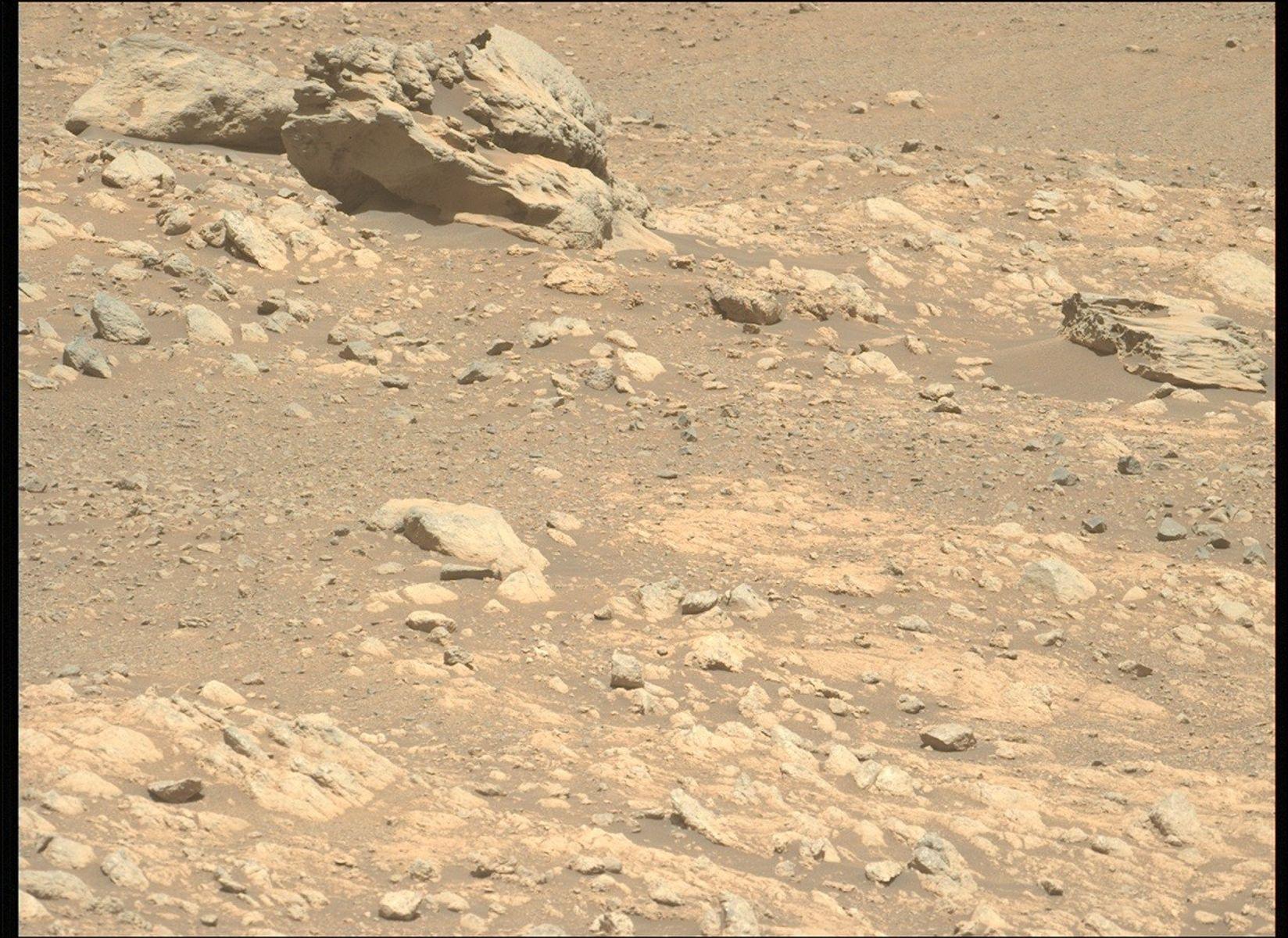NASA’s Mars Rover Perseverance Discovers "Alien Rock" on the Red Planet
The "unusually shaped" rock may be a meteorite.
Published Nov. 20 2025, 5:50 p.m. ET
The National Aeronautics and Space Administration (NASA)'s Perseverance Mars rover made an unbelievable discovery on the planet of Mars that doesn't seem to be from that planet. Indeed, a roughly 31-inch rock that stood out from the surrounding rocks captured the interest of the Perseverance Mars rover and the NASA scientists who have been puzzled by the rock's appearance.
If you have not yet learned about the latest rock discovery on the planet Mars, you are in for an extraterrestrial treat.
Could it be that an "alien rock" somehow made its way to the planet Mars, or is there a more grounded, scientific explanation as to how this rock came to find itself residing amongst rocks that look nothing like it? Why, you might ask, has an oddly-shaped rock on the planet Mars aroused so much curiosity and scientific exploration?
Below, we review the Perseverance Mars rover's findings and uncover what, exactly, is up with this alien rock. Buckle up, as this is poised to be a rocky ride.
NASA’s Perseverance Mars rover discovers "alien rock" on Mars.
According to the NASA blog post entitled "A Stranger in Our Midst?", the Perseverance Mars rover undertook an investigation of the bedrock at Vernodden, whereupon it encountered an "unusually shaped rock" roughly 31 inches in length that was dubbed “Phippsaksla.”
Per the blog, the rock piqued the rover's interest "based on its sculpted, high-standing appearance that differed from that of the low-lying, flat and fragmented surrounding rocks."
The strange rock was assessed using NASA's SuperCam tool, and scientists discovered that the rock is high in iron and nickel. This suggests that the rock is a meteorite.
"This element combination is usually associated with iron-nickel meteorites formed in the core of large asteroids, suggesting that this rock formed elsewhere in the solar system."
Per the blog post, Phippsaksla is not the first foreign rock that was discovered on the surface of Mars. The Curiosity Mars rover, in fact, discovered the roughly 39-inch Lebanon meteorite in 2014, as well as the Cacao meteorite in 2023.
"Both Mars Exploration Rovers, Opportunity and Spirit, also found iron-nickel meteorites during their missions," according to the blog post.
"As such, it has been somewhat unexpected that Perseverance had not seen iron-nickel meteorites within Jezero crater, particularly given its similar age to Gale crater and [the] number of smaller impact craters suggesting that meteorites did fall on the crater floor, delta, and crater rim throughout time."
So, there you have it: Phippsaksla appears to be an "alien rock" that most likely did not come from the planet Mars, but through some confluence of factors, eventually landed on the planet.
It is a remarkable thought that the meteorite was molded in the way it was, and eventually landed on Mars, where it was discovered by a rover due to its standout features that are very much dissimilar to the rocks around it.

